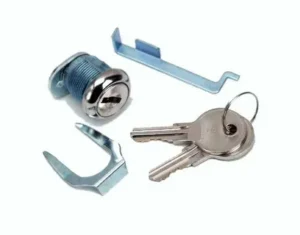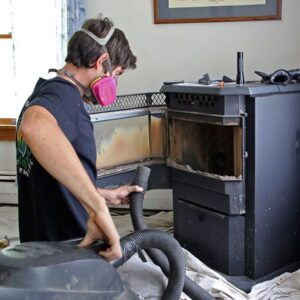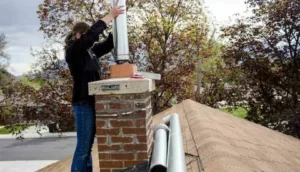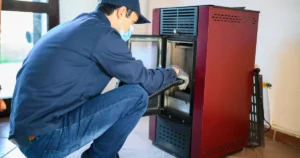 Have you ever stared at your stubborn file cabinet, jammed shut by a broken lock, and wondered if there’s an easy way to fix it without calling a locksmith? Whether you’re protecting important business records or family keepsakes, a reliable cabinet lock is a must. But replacing one yourself? It’s easier than you think, and you’ll save a good chunk of change over the years. Let’s break down everything you need for a successful, safe, and cost-effective File Cabinet Lock Replacement
Have you ever stared at your stubborn file cabinet, jammed shut by a broken lock, and wondered if there’s an easy way to fix it without calling a locksmith? Whether you’re protecting important business records or family keepsakes, a reliable cabinet lock is a must. But replacing one yourself? It’s easier than you think, and you’ll save a good chunk of change over the years. Let’s break down everything you need for a successful, safe, and cost-effective File Cabinet Lock Replacement
Gathering Your Tools: The Must-Haves for a Smooth Swap
Before you jump in, it’s smart to assemble all the right tools—you don’t want to be halfway through and realize you’re missing something crucial. Here’s your go-to toolkit for a DIY cabinet lock replacement:
- New Lock Kit: Get a replacement lock that matches your cabinet’s model or is universally compatible. Most come with keys, a locking mechanism, and necessary screws.
- Screwdriver Set: You’ll need both Phillips and flat-head screwdrivers. Cabinets can be unpredictable with their screw types!
- Pliers: For gripping or pulling out stubborn parts, especially if the old lock is rusted.
- Drill (Optional): If screws are stripped or stuck, a cordless drill makes removal much easier.
- Measuring Tape: To confirm the size of the lock cylinder and ensure a snug fit for your new lock.
- Safety Gear: Gloves and safety glasses. Protect your hands and eyes from metal shards or splinters.
Having these tools on hand makes the job straightforward, even for first-time DIYers. Plus, these are handy items for all sorts of small repairs around the house.
Key Features, Safety, and Cost: A Quick Comparison
Not all cabinet locks are created equal! Here’s a look at what matters most when picking your replacement, plus a quick breakdown of safety and cost considerations.
| Key Feature | What to Look For | Safety | Average Cost (USD) |
|---|---|---|---|
| Lock Type | Cylinder, cam, or electronic; match with your cabinet | Choose sturdy materials to deter tampering | $8 – $30 |
| Material | Solid metal (steel or brass) for durability | Prevents forced entry, resists rust | Included in lock price |
| Install Method | Simple screw-in or snap-fit for DIY ease | Secure fit reduces risk of prying open | Usually no extra cost |
| Emergency Access | Some locks offer master keys or override features | Ensures you’re not locked out in an emergency | May add $5 – $10 |
When you’re replacing your file cabinet lock, balancing security with convenience is key. For offices with lots of confidential paperwork, a lock with emergency access or master key system is a smart bet. This is a great example of a filing cabinet security feature that adds peace of mind.
Step-by-Step: Out with the Old, In with the New
Here’s the part most folks worry about, but trust me—it’s not rocket science. Follow these quick steps for a smooth swap:
- Empty the Cabinet: Take out all files and items. You don’t want paperwork flying everywhere.
- Remove the Old Lock: Unscrew the mounting plate with your screwdriver. Use pliers for any stuck bolts or clips.
- Measure: Use your tape to check the cylinder length and diameter. This ensures your new lock will fit perfectly.
- Install the New Lock: Insert and align the lock, then secure it with the included screws. Double-check it turns smoothly before reloading your files.
- Test: Lock and unlock a few times. If you went for a model with emergency override, make sure that function works, too.
“Most people don’t realize how simple home security upgrades can be—until they tackle a small project and see the results for themselves.”
If you’re ever in doubt, many lock kits come with detailed instructions, and there are always helpful videos online. Safety tip: Always wear gloves and goggles to avoid nicks or scratches!
When to Call for Emergency Services
Sometimes, a DIY fix just won’t cut it. If your lock is severely jammed, the key is broken off inside, or you’re dealing with an old, valuable cabinet, it might be time to call a professional locksmith. Many offer emergency lockout services and can help you regain access without damaging the cabinet itself.
For everyday situations, though, most people find that a little patience and the right tools are all that’s needed.
Conclusion: Save Money, Gain Confidence
Replacing a file cabinet lock on your own is one of those DIY wins that pays off for years—your files stay protected, you avoid costly service calls, and you gain a bit more confidence with every project you tackle. By investing in a few basic tools and picking a quality lock with the features you need, you’re not just saving money today, but protecting your documents for the long haul. Next time you need a cabinet lock replacement, you’ll know exactly what to do—and maybe even help a friend with theirs!
Read more: Citrus Heights Locksmith





